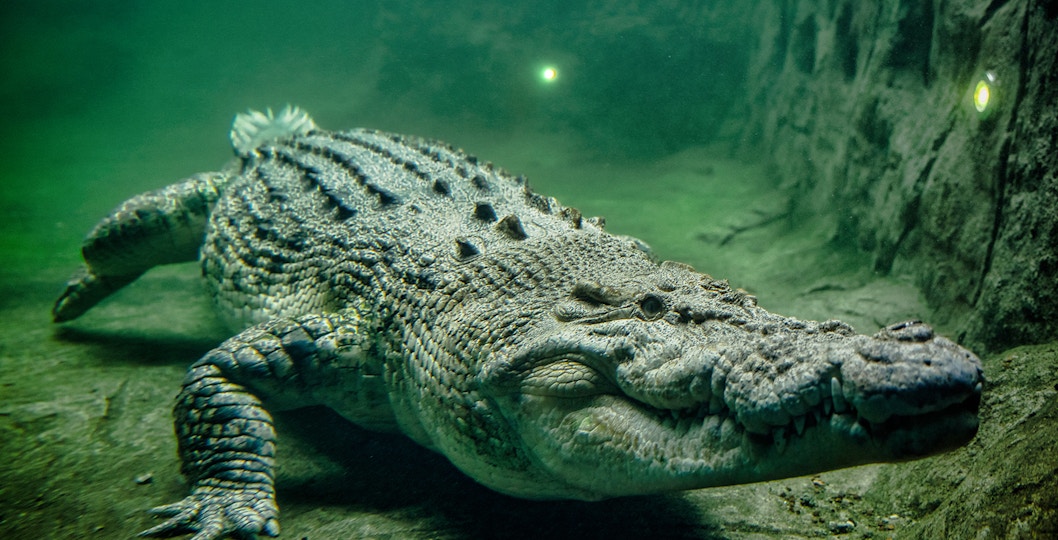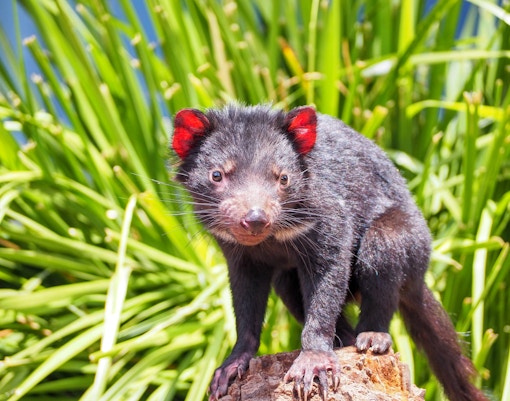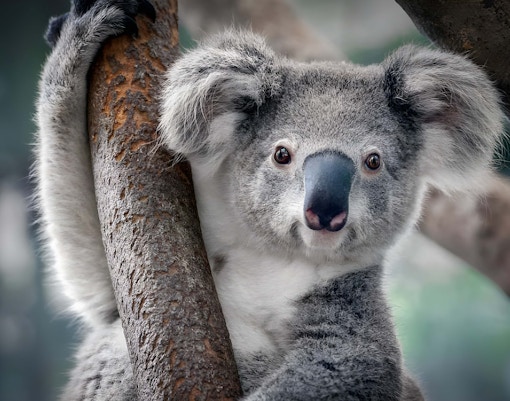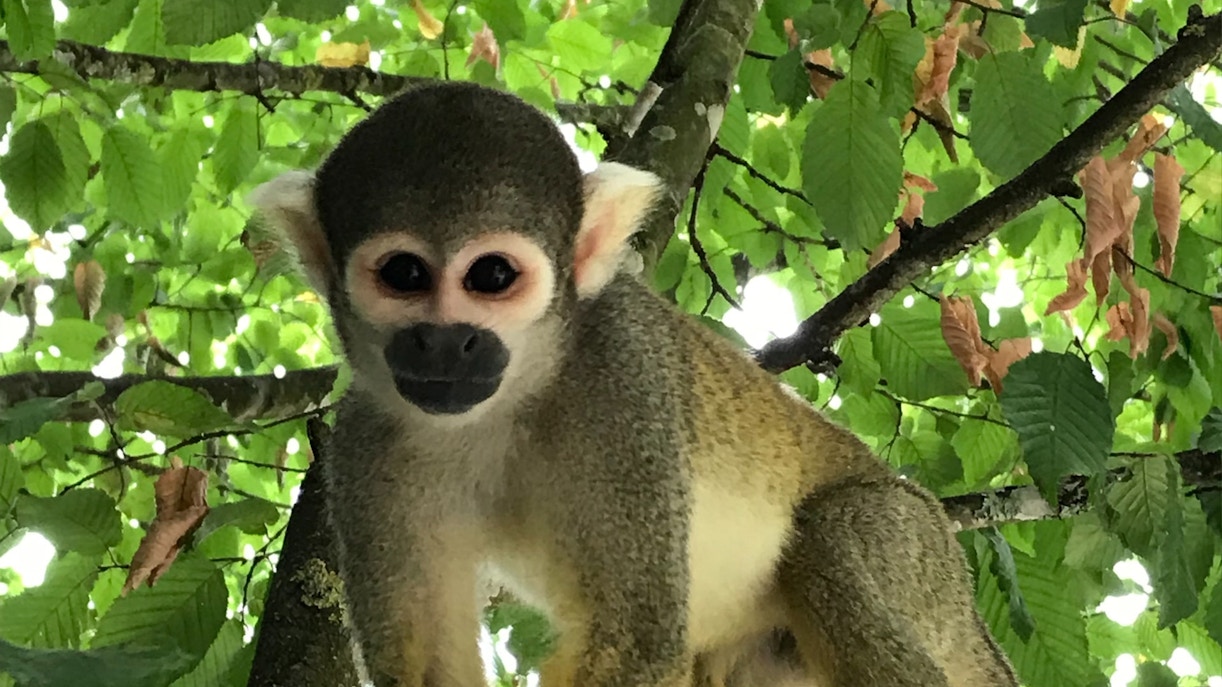- Scenic World Tickets
- Sydney to Blue Mountain Tours
- Sydney Opera House Tours
- Skydive Sydney Tickets
- Taronga Zoo Tickets
- Sydney Tower Eye Tickets
- SEA LIFE Sydney Aquarium Tickets
- Madame Tussauds Tickets
- Mogo Wildlife Park Tickets
- Australian National Maritime Museum Tickets
- Australian Reptile Park Tickets
- Sydney Zoo Tickets
- Hunter Valley Wine Tours
WILD LIFE Sydney Zoo Tickets
Headout is an authorized and trusted partner of the venue, offering curated experiences to enjoy this attraction.

- The Wild LIFE Sydney Zoo is a blast of intriguing flora and fauna, located conveniently in the heart of Sydney.
- The zoo is divided into 10 zones, each boasting various specialties of animals, allowing you to head over to your favorite first.
- Gasp at the colorful butterflies at the Butterfly Tropics, and wave at the endangered Tasmanian devils at the Devil's Den.
- Get acquainted with koalas at Gumtree Valley, Koala Rooftop, and Koala Rooftop Cafe! You also get the exclusive opportunity to touch them- which is not an option in most Australian zoos.
- At the Kakadu Gorge, meet Rocky, the Saltwater crocodile that moved into this zoo in 2017.
- Make sure you visit the other zones as well, including Wallaby Cliffs, Daintree Rainforest, and Night Fall.
- The Wild LIFE Sydney Zoo is a blast of intriguing flora and fauna, located conveniently in the heart of Sydney.
- The zoo is divided into 10 zones, each boasting various specialties of animals, allowing you to head over to your favorite first.
- Gasp at the colorful butterflies at the Butterfly Tropics, and wave at the endangered Tasmanian devils at the Devil's Den.
- Get acquainted with koalas at Gumtree Valley, Koala Rooftop, and Koala Rooftop Cafe! You also get the exclusive opportunity to touch them- which is not an option in most Australian zoos.
- At the Kakadu Gorge, meet Rocky, the Saltwater crocodile that moved into this zoo in 2017.
- Make sure you visit the other zones as well, including Wallaby Cliffs, Daintree Rainforest, and Night Fall.
Inclusions
- Entry to Wild LIFE Sydney Zoo
- Digi Photo Pass (8 digital photos)
Exclusions
- Pick-up and Drop-off
- Children aged under 16 must be accompanied by a paying adult aged 18 and above.
- Check the official website for the daily opening hours, as well as the animal feeding and keeper talk schedule, prior to your visit.
- This experience is wheelchair accessible.
- You can cancel these tickets up to 24 hours before the experience begins and get a full refund.
- With the Sydney Multi-attraction Pass, you can choose to visit 2, 3, or 4 attractions using a single ticket. Perfect for making the most of Sydney!
- This package saves you up to half (that's 30 to 50%!) compared to buying individual tickets. Plus, you can walk between all the attractions.
- Check out SEA Life Sydney Aquarium to see dugongs, sharks, and jellyfish, or visit WILD LIFE Sydney Zoo for koalas, kangaroos, and over 6000 other animals.
- Visit Madame Tussauds for 100 lifelike celebrity wax figures or head to Sydney Tower Eye for amazing views of the Harbour Bridge, Opera House, and Blue Mountains.
- The pass is valid for 30 days (2 attractions) or 60 days (3 or 4 attractions), so you can spread out your visits and enjoy at your own pace.
- With the Sydney Multi-attraction Pass, you can choose to visit 2, 3, or 4 attractions using a single ticket. Perfect for making the most of Sydney!
- This package saves you up to half (that's 30 to 50%!) compared to buying individual tickets. Plus, you can walk between all the attractions.
- Check out SEA Life Sydney Aquarium to see dugongs, sharks, and jellyfish, or visit WILD LIFE Sydney Zoo for koalas, kangaroos, and over 6000 other animals.
- Visit Madame Tussauds for 100 lifelike celebrity wax figures or head to Sydney Tower Eye for amazing views of the Harbour Bridge, Opera House, and Blue Mountains.
- The pass is valid for 30 days (2 attractions) or 60 days (3 or 4 attractions), so you can spread out your visits and enjoy at your own pace.
Inclusions
- Access to 2/3/4 attractions (based on the options selected)
- 8 digital photos
- Tip: Save the day with Spider-man as you enter the multiverse to capture the ultimate photo moment at Madame Tussauds.
- You must visit SEA LIFE Sydney Aquarium as your first attraction on the selected day of your visit if you choose the option containing SEA LIFE.
- Pre-registration is required for the subsequent attractions you plan to visit. Please check your voucher on how to reserve time slots for other attractions before your visit.
- After visiting SEA LIFE Sydney Aquarium, your '2 Attraction Pass' is valid for 30 days and the 3 Attraction & 4 Attraction passes are valid for 60 days. You can choose any of the spots to visit later.
- Click here to view the route map.
- Latecomers or no-shows can't be refunded.
SEA LIFE Sydney Aquarium
- Facilities: Wheelchair accessibility, suited for visitors with visual impairments, parking.
- Children aged 16 and under must be accompanied by an adult.
WILD LIFE Sydney Zoo
- Facilities: Wheelchair accessibility
- Children aged under 16 must be accompanied by a paying adult aged 18 and above.
- Check the official website for the daily opening hours, as well as the animal feeding and keeper talk schedule, prior to your visit.
Madame Tussauds Sydney
- Facilities: Wheelchair and pram/stroller accessible
- Food & beverages, and pets are not allowed inside.
- Cameras are allowed in all areas of the venue. However, if you are doing special filming, you are required to contact the press office for permission.
Sydney Tower Eye
- Large suitcases are not allowed on this experience. Only small bags or hand luggage are allowed.
- All children aged 16 or under must be accompanied by a paying adult.
- These tickets can't be cancelled or rescheduled.
Top things to do in Sydney
The Aussie 'Big Five' at WILD LIFE Sydney Zoo
One of the premier attractions at Wild Life Sydney Zoo is the Australian Big 5, comprising Koalas, Kangaroos, Crocodiles, Wombats, and Platypuses. You must check these animals out when you visit Wild Life Sydney Zoo.

Koalas
Koalas are plant-eating marsupials that live in trees and are native to Australia. Wombats, members of the Vombatidae family, are their closest surviving cousins. Male and female koalas are housed in separate habitats at the Wild Life Sydney Zoo.

Kangaroos
Kangaroo Island is a small island off the coast of Australia. Kangaroos at Wild Life Sydney Zoo are a sub-species of the Western Grey Kangaroo. The fur on these kangaroos is thicker and darker, and they are recognized for being friendly. Kangaroos are the largest members of the Macropod family, which is defined by their huge feet.

Crocodile
Rocky, a massive saltwater crocodile, lives in Wild Life Sydney Zoo. He spends much of his time in his big pool, like other crocodiles. Rocky's water temperature is regulated at 30 degrees to let him retain his ideal body temperature of 30-33 degrees.

Wombat
Ringo, the zoo's bare-nosed wombat, loves carrots more than anything else. The rambunctious kid was born in August of 2013. Wild Life Sydney Zoo found him as an abandoned infant and adopted him. Ringo can be found wreaking havoc in Wallaby Cliffs, but he is also frequently seen visiting his adoring fans at the Zoo.

Platypus
The platypus is a member of the monotremes, or egg-laying mammals, which is the world's smallest mammal order. Echidna, another Australian native, is the only other member of this select club. The platypus, which is only found in eastern Australia, burrows in the steep banks of creeks and rivers and hunts for small prey in deep pools such as shellfish, fish, tadpoles, and insect larvae.
Other Animals at WILD LIFE Sydney Zoo

Wallabies
This endangered species can be found primarily in inland areas of South Australia and New South Wales. They are herbivores that eat short grasses and dried herbs, depending on what is available at the time. They are given grass pellets, carrots, corn, and native grasses at the Wild Life Sydney Zoo. They live in colonies ranging in size from ten to over one hundred wallabies.

Nocturnal Species
Bilbies are a remarkable but little-known species native to Australia. They are a keystone species, which means that their survival boosts the odds of 19 other vulnerable species surviving. The Ghost bat is the largest carnivorous bat in Australia. They devour huge insects, reptiles, frogs, and small mammals and use echolocation, eyesight, and hearing to locate their prey.

Snakes
'Big Ronny,' a massive 5-meter Scrub Python, lives at Wild Life Sydney Zoo. They are Australia's biggest snake species, capable of reaching lengths of over 8.5 meters. The Diamond Python is a medium to big snake found in south-eastern Australia's coastal areas and neighboring ranges. The Eastern Brown Snake is the world's second-deadliest snake and is perhaps the most commonly encountered venomous snake in Eastern Australia.

Tasmanian Devils
Mirrin and Dharra, Tasmanian Devils, reside at the Wild Life Sydney Zoo. As a predator managing the food chain and as a scavenger eliminating dead animals from the landscape, Tasmanian Devils play an extremely vital function in their ecosystem.

Quokka
Quokkas are mostly found on Rottnest Island, which is located close to the coast of Perth. They reach a height of 90cm and a weight of up to 4kg. Native grasses, leaves, and seeds make up their food. Davey is the Quokka who inhabits the Wild Life Sydney Zoo premises.

Mini Beasts
Wild Life Sydney Zoo has three species of Mini beasts. Superworms are the larvae of a Darkling beetle species, hence they are not true worms. Because they eat deceased animals, superworms in the larvae stage are beneficial to humans. The fruiting bodies of fungi found on the forest floor provide food for the Giant Rainforest Snail. Throughout Eastern Australia, Common Yabby can be found in freshwater bodies such as lakes, ponds, and streams.

Spiders
There are two species of native Australian native spiders at Wild Life Sydney Zoo. The notorious Red-back spider may be found all around Australia. These spiders employ an elaborate pattern to weave their web, which is specifically designed to catch little crawling animals. The Sydney Funnel-web spider is the most hazardous spider on the planet. They must rear up to inject their venom because their fangs point down their bodies.

Birds
The Bush Stone-Curlew, sometimes known as the bush thick-knee, is an indigenous Australian ground-dwelling bird that is mostly nocturnal. It is best known for hunting small grassland animals. The princess parrot is a little parrot with a large head. With a pink throat, bluish crest, and vivid green shoulders, their feathers are predominantly green.

Goodfellow’s Tree Kangaroo
Even though they are classified as kangaroos, Goodfellow's Tree Kangaroos are one of 14 Tree Kangaroo species that look and act very differently from the kangaroos you are probably familiar with. They have adapted themselves to living in trees.

Numbat
Frankie the Numbat is no stranger to Sydney residents, who first heard him in 2016 after he was discovered, neglected and separated from his mother. Numbats are an important piece of the ecological puzzle in Australia.

Cassowary
In Australian rainforests, the cassowary is the largest native vertebrate. After the ostrich and the emu, it is also the world's third tallest bird. The male cassowary, unlike many other animals, is the one who raises the young. Cassowaries have also been dubbed the "deadliest bird on the planet."
Zones at WILD LIFE Sydney Zoo
WILD LIFE Sydney Zoo has several animals. These animals are then further found in ten separate zones that are themed according to the habitats of the animals.

Tricky Tongues And Treetops
Meet Frankie the rescue Numbat from Western Australia, Kofi the Goodfellow's Tree Kangaroo, and the Echidnas in this brand new habitat. The animals in this zone are very important to the ecological balance of Australia and are therefore quite popular too.

Devil's Den
The Tasmanian Devils Mirrin and Dharra live in Devil's Den. Their 'Dens' are subterranean burrows that they sleep in, which are usually found in dense foliage, thick grass, or caverns. Mirrin and Dharra are ambassadors for their severely endangered species.

Gumtree Valley
The unique eucalyptus scent of gum trees screams "Australia." These amazing trees may be found all over Australia's East Coast, but especially in New South Wales. The famed koalas can be spotted lounging and eating on Eucalyptus leaves in Gumtree Valley. The Bush Stone-curlew, Noname, can also be found in Gumtree Valley.

Wallaby Cliffs
Wallaby Cliffs is home to some of Australia's toughest creatures, including Yellow-footed Rock Wallabies and Ringo, the Bare-nosed Wombat. These animals are used to employing their survival skills to weather the conditions of their habitats.

Daintree Rainforest
If you want to get up close and personal with Australia's creatures, visit the Wild Life Sydney Zoo's recreation of Queensland's stunning Daintree Rainforest. Princess the Southern Cassowary, the Pademelons family, a Satin Bowerbird, and many other species call this ecosystem home.

Kangaroo Walkabout
Kangaroo Walkabout features kangaroos, a quokka, an emu, and princess parrots from Kangaroo Island. In this popular zone, learn more about the famed Kangaroo Island kangaroos Dot, Dusk, Nutmeg, Kirby, and Julie, as well as the cheeky Quokka, Davey.

Kakadu Gorge
Interact with a massive saltwater crocodile in the adventurous world of Kakadu Gorge. While on your fantastic journey of discovery to Australia's Kakadu Gorge, you may learn about the preservation challenges confronting crocodiles in the wild with on-site quick facts and sustainability messaging exhibited around the crocodile's new display.

Platypus Pool
The Platypus Pool is where you can look out for the fascinating and graceful platypus pals. Know about how these endangered creatures lay their eggs, their feeding habits, and what makes these iconic Australian animals so special. The platypus can be found relaxing amid the logs and branches in the water on occasion.

Nightfall
At the Nightfall ecosystem, you can see the strange and wonderful species that emerge after dark. Bilbies and Sugar Gliders are examples of nocturnal creatures found in this zone. This portion of the zoo provides an immersive experience by allowing visitors to see the animals in their natural habitat.

Koala Rooftop
The Koala Rooftop is your chance to get up face to face with Australia's favorite animal. You can walk inside the koala cage to meet the lovely fluffy sisters and have your photo taken with Australia's most iconic animal if you choose the koala interaction option.
More Things to Do at WILD LIFE Sydney
Once you are done visiting the animals at Wild Life Sydney Zoo, explore the other experiences that are available for you at the facility. Here are some of the best experiences at WILD LIFE Sydney Zoo:

Koala Photo
At Wild Life Sydney Zoo's lovely open-air rooftop area, the Koala Photo Experience encourages visitors to see and even get up close to the cute koalas. You will have the chance to snap a photo with our animal buddies, which you can then show your friends and family when you reach home.

Breakfast with the Koalas
Breakfast with the Koalas includes a hot breakfast buffet on the Koala Rooftop as well as an educational Koala keeper lecture. A Koala Photo is given to help you remember this once-in-a-lifetime encounter. In the morning, you will also get a guided tour of the zoo.

Australian Wildlife Tour
The new zoo tour at Wild Life Sydney Zoo takes you behind the scenes and allows you to get up and personal with iconic Australian creatures. This intimate zoo tour, led by two keepers, provides access to restricted areas as well as up-close photo chances with koalas and other Australian animals using your own equipment.

Private Dining
You will proceed inside the zoo as the sun sets to enjoy an intimate meal for two from the kangaroo observation area. You will continue your journey to the Koala Rooftop after dinner, where you will be served dessert and have the opportunity to visit the koalas.
Plan Your Visit

Thursday - Monday: 10 AM to 4 PM
The last entry time at the zoo is at 3 PM.

Address: 1-5 Wheat Rd, Sydney NSW 2000, Australia
By Ferry: Every half-hour, public ferry services to Darling Harbour leave from Circular Quay Wharf 5.
By Train: Wynyard Station and Town Hall Station are both within walking distance of Wild Life Sydney Zoo. From Wynyard or Town Hall, go down the hill to King Street or Market Street, then down the hill to Darling Harbour.
By Bus: Take the Sydney Explorer Bus No. 24 or any bus service that stops at Market Street or King Street to Darling Harbour and walk the short distance to Wild Life Sydney Zoo.
By Light Rail: To get to Wild Life Sydney Zoo, get off the light rail at either the Convention Centre or Pyrmont Bay stations.

- Baby changing facility is available at WILD LIFE Sydney Zoo
- WILD LIFE Sydney Zoo is wheelchair accessible.
- Prams and buggies can be taken to all parts of WILD LIFE Sydney Zoo.
- The zoo is fully equipped with free WiFi service.
- Koala Rooftop Cafe lets you dine at the WILD LIFE Sydney Zoo while seeing the koalas in their natural habitat.

- Assistance animals for visually impaired visitors are welcome at WILD LIFE Sydney Zoo.
- Carers can gain free entry with the visitors at WILD LIFE Sydney Zoo.
- Extensive mobility assistance is provided at the zoo.
- Bench seating is available throughout the zoo at regular intervals to help the visitors rest.
- All bathrooms at are suitable for visitors who need assistance.
- Visitors who need a less crowded environment to enjoy the zoo are invited to visit after 2 PM when the zoo is less crowded.

- WILD LIFE Sydney Zoo can remove a visitor because of disorderly behavior or for violating the rules.
- All visitors must be wearing masks at all times during their visit to Wild Life Sydney Zoo.
- Children under the age of 15 must be accompanied by an adult to the zoo.
- WILD LIFE Sydney Zoo can search specific individuals in case it seems that they pose any danger to the animals or other visitors.
- Visitors must not use devices that emit loud or agitating noises that may provoke animals.

- BridgeClimb Sydney: This is one of the most exhilarating tourist activities in the city where you can climp Sydney harbour Bridge and gain a bird’s eye view of the city.
- Madame Tussauds Sydney: Madame Tussauds Sydney is known for its hyper-real wax statues of celebrities and characters from all around the world.
- SEA LIFE Sydney Aquarium: At SEA LIFE Sydney Aquarium, you will be to witness some of Australia’s and world’s most fascinating marine creatures.

Koala Rooftop Café: The Koala Rooftop Café is the best place to be be if you want to grab a bite while keeping one eye on the playful koalas.

Budget: Base Backpackers, Zen Harmony House Sydney, UNO Hotel Sydney
Mid-range: Ibis Sydney Barangaroo, Megaboom City Hotel, The Occidental Hotel
Luxury: Hyatt Regency Sydney, SKYE Suites Sydney, The Darling
All Your Questions about WILD LIFE Sydney Zoo Answered
You can book your tickets to WILD LIFE Sydney Zoo at great discounts here.
You can book your tickets to WILD LIFE Sydney Zoo here and get major deals and discounts.
Booking your tickets to WILD LIFE Sydney Zoo online ensures a hassle-free experience. You also get great deals and discounts.
WILD LIFE Sydney Zoo is owned and maintained by Merlin Entertainments.
It typically takes about 2 hours to explore the entire WILD LIFE Sydney Zoo.
No, WILD LIFE Sydney Zoo is not indoors.
No, you cannot bring your own food.
You can spend as much time as you want at WILD LIFE Sydney Zoo. It can take 2 hours to explore the WILD LIFE Sydney Zoo.






















.jpg?auto=format&w=360&h=480.59999999999997&q=90&fit=crop&crop=faces)




